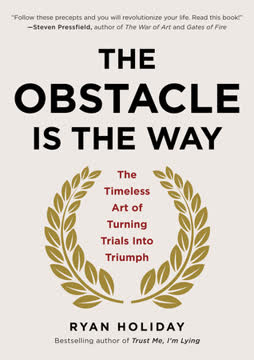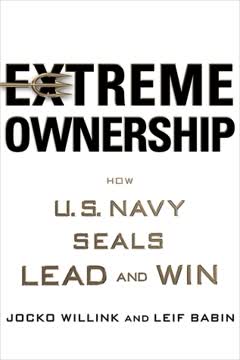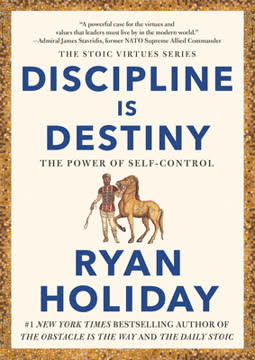Key Takeaways
1. Establish Your Set Point: Define Your Stand and Purpose
"If you don't establish your set point, and don't connect every action to it so you can answer, 'Why am I doing this?' in the face of great personal risk, then you can easily be derailed by circumstances or other people's desires for you."
Define your core beliefs. Your stand is the articulation of your character, a set of rock-bottom beliefs that guide your behavior and decisions. It answers the question "What would I do?" in challenging situations. To develop your stand, reflect on your upbringing, experiences, and values. Write down 6-10 powerful statements that feel authentic to you.
Uncover your life's purpose. Your purpose answers the question "Why am I here?" and provides direction for your journey. Focus on a "being" purpose rather than an "achievement" purpose to allow for flexibility and growth. For example, instead of "become a CEO," consider "inspire others to achieve their full potential." Regularly revisit and refine your purpose as you gain new insights and experiences.
Key components of your set point:
- Stand: Core beliefs and values
- Purpose: Reason for existence
- Passion: What drives and excites you
2. Develop Front-Sight Focus: Prepare Your Mind and Envision Goals
"To win at anything, we must first win control over our minds."
Calm your mind. Practice deep breathing exercises like Box Breathing to reduce stress, increase focus, and improve your ability to concentrate. This technique involves inhaling, holding, exhaling, and holding again, each for a count of four. Regular practice helps you maintain composure in challenging situations.
Visualize success. Use mental projection to plant seeds of your desired future in your subconscious mind. Create vivid, detailed images of achieving your goals, engaging all your senses. This practice aligns your subconscious with your conscious actions, increasing the likelihood of success.
Steps to develop front-sight focus:
- Practice deep breathing and meditation
- Create a "mind gym" for visualization
- Use mental projection to envision goals
- Simplify your environment and commitments
- Regularly review and adjust your focus
3. Bulletproof Your Mission: Select High-Value Targets and Explore Options
"If you can't communicate your mission, you won't get support, and worse, you may not recognize disparities between your vision and your stakeholders'."
Choose the right targets. Use the FITS process (Fit, Importance, Timing, Simplicity) to evaluate potential targets and select those that align best with your mission. This ensures you focus your resources on the most valuable opportunities.
Explore your options. Apply the PROP process (Priorities, Realities, Options, Path) to develop and analyze courses of action. This structured approach helps you consider multiple perspectives and choose the optimal path forward. Communicate your mission effectively using the SMACC framework (Situation, Mission, Action, Command, Communication) to create a compelling visual story that engages stakeholders and team members.
Key mission planning tools:
- FITS: Target analysis
- PROP: Course of action development
- SMACC: Mission communication
4. Do Today What Others Won't: Find Your 20X Factor and Embrace Challenges
"The 20X factor is all about embracing a personal culture of mighty effort."
Push your limits. Regularly engage in activities that take you out of your comfort zone and challenge you physically, mentally, and emotionally. This could include intense physical training, learning a new skill, or tackling a difficult project. These experiences help you discover your true capabilities and build resilience.
Embrace discomfort. Learn to differentiate between good pain (integrating) and bad pain (disintegrating). Lean into integrating pain, recognizing its value in personal growth and development. Use techniques like focusing on positive outcomes and using humor to transmute pain into positivity.
Ways to find your 20X factor:
- Set ambitious physical challenges
- Take on mentally demanding tasks
- Engage in emotionally challenging situations
- Learn new skills outside your expertise
- Volunteer for high-pressure responsibilities
5. Forge Mental Toughness: Control Your Response and Attention
"Success seems to be largely a matter of hanging on after others have let go."
Master your response. Use arousal control techniques like Box Breathing to manage your physiological reactions to stress. Practice shifting between focused and relaxed awareness states to maintain situational awareness while conserving mental energy.
Direct your attention. Implement the DIRECT process (Detect, Interdict, Redirect, Energize, Communicate, Train) to manage negative thoughts and emotions. Develop emotional resilience by transforming negative emotions into positive, productive states. Set SMART goals (Specific, Measurable, Achievable, Realistic, Timely) to maintain focus and motivation.
Mental toughness components:
- Arousal control
- Attention control
- Emotional resilience
- Effective goal setting
- Powerful visualization
6. Break Things: Apply Total Commitment and Fail Forward Fast
"True commitment, the type your teammates can rely on as if their lives depended on it, requires you to burn your boat upon the shore of action."
Commit fully. Embrace the "do or do not" mentality, eliminating half-hearted attempts. When you commit to a course of action, remove escape routes and focus all your energy on finding a way to succeed. This level of commitment inspires confidence in yourself and others.
Learn from failure. Adopt a "fail forward fast" approach, viewing failures as valuable learning opportunities. Systematize trial and error by implementing a process of attempting, analyzing, modifying, and reattempting. This iterative approach accelerates learning and innovation.
Steps to break things effectively:
- Apply total commitment
- Fail forward fast
- Navigate gaps for opportunity
- Innovate and adapt quickly
- Break inertia with decisive action
7. Build Your Intuition: Expand Awareness and Strengthen Sensory Perception
"Intuition development requires us to expand our range of awareness and tap into our subconscious minds at will."
Enhance your awareness. Practice shifting between focused and relaxed awareness states to absorb more information from your environment. Use techniques like the KIM (Keep in Memory) game to improve your attention to detail and memory recall.
Sharpen your senses. Regularly engage in exercises that isolate and strengthen each of your senses. This heightened sensory perception contributes to improved intuition and decision-making. Uncover your "Background of Obviousness" (BOO) – hidden beliefs and unresolved emotions that influence your behavior – through self-reflection and mind gym exercises.
Intuition-building practices:
- Focused and relaxed awareness training
- Sensory perception exercises
- Mind gym visualizations
- BOO uncovering and resolution
- Regular meditation and mindfulness
8. Think Offense, All the Time: Develop Unwavering Confidence and Execute Rapidly
"The best way to predict your future is to create it."
Cultivate confidence. Develop an offensive mindset by using positive, action-oriented language and avoiding mental traps like confirmation bias. Practice making quick, decisive judgments while maintaining awareness of potential blind spots.
Execute with speed and agility. Implement standard operating procedures (SOPs) for routine tasks to free up mental resources for creative problem-solving. Use the OODA loop (Observe, Orient, Decide, Act) for rapid decision-making in dynamic situations. Foster a culture of trust and empowerment within your team to enable quick, effective execution.
Offensive thinking strategies:
- Use positive, action-oriented language
- Avoid mental traps and biases
- Maintain situational awareness
- Implement SOPs for routine tasks
- Apply the OODA loop for rapid decisions
- Foster trust and empower team members
Last updated:
FAQ
What's The Way of the SEAL about?
- Leadership and Warrior Mindset: The Way of the SEAL by Mark Divine focuses on developing leadership skills and a warrior mindset, combining mental toughness, emotional resilience, and intuitive awareness.
- Eight Core Principles: The book outlines eight principles derived from Navy SEAL training, martial arts, and business experience, aimed at achieving success in various life aspects.
- Practical Application: It provides practical exercises and drills to help readers integrate these principles into their daily lives, making the content actionable and relatable.
Why should I read The Way of the SEAL?
- Transformative Insights: Gain transformative insights into leadership and personal development applicable in both professional and personal contexts.
- Proven Techniques: Learn proven techniques for building mental toughness, emotional resilience, and effective goal-setting.
- Inspiration from Real Experiences: The author shares personal stories from his time in the SEALs, making the lessons relatable and inspiring.
What are the key takeaways of The Way of the SEAL?
- Mental Toughness: Emphasizes the importance of mental toughness for overcoming challenges and achieving goals.
- Embrace Failure: Encourages viewing failure as an opportunity for growth, promoting a mindset of "failing forward fast."
- Intuition and Awareness: Highlights the significance of developing intuition and awareness in decision-making.
What are the best quotes from The Way of the SEAL and what do they mean?
- “Do today what others won’t; do tomorrow what others can’t.” Encourages stepping outside comfort zones for future success.
- “Courage is grace under pressure.” Highlights maintaining composure in challenging situations as true strength.
- “Success seems to be largely a matter of hanging on after others have let go.” Reflects persistence and determination as key success factors.
How does The Way of the SEAL define mental toughness?
- Resilience Under Pressure: Defined as the ability to remain focused and composed under pressure, performing at one's best.
- Five Key Skills: Includes controlling response, attention, developing emotional resilience, setting goals, and visualizing powerfully.
- Practical Exercises: Offers exercises to cultivate mental toughness through consistent practice and self-awareness.
What is the 20X Factor mentioned in The Way of the SEAL?
- Unlocking Potential: Suggests individuals can achieve at least twenty times more than they believe.
- Embracing Challenges: Encourages embracing challenges and discomfort for growth.
- Real-Life Applications: Illustrated through SEAL training and personal experiences to discover one's 20X Factor.
What is the significance of the OODA Loop in The Way of the SEAL?
- Decision-Making Framework: A tactical model (Observe, Orient, Decide, Act) for quick and effective decisions.
- Speed and Agility: Emphasizes speed in decision-making for strategic advantage.
- Continuous Feedback: Encourages continuous observation and feedback for real-time strategy adaptation.
How can I apply the principles from The Way of the SEAL in my daily life?
- Set Clear Goals: Establish your set point by defining core values and purpose for guided decision-making.
- Practice Front-Sight Focus: Maintain focus on high-value targets while eliminating distractions.
- Embrace Challenges: Seek opportunities to push limits and embrace discomfort for resilience development.
What is the Focus Plan in The Way of the SEAL?
- Goal Setting Framework: A structured approach to setting and achieving goals by clarifying priorities.
- Daily Review Process: Recommends daily review as part of a morning ritual to reinforce commitment.
- Adaptability and Flexibility: Encourages adaptability, allowing goal and strategy adjustments as needed.
How does The Way of the SEAL address emotional resilience?
- Understanding Emotions: Emphasizes recognizing and managing emotions to maintain mental toughness.
- Transforming Negative Emotions: Uses the DIRECT process to redirect negative emotions into positive expressions.
- Cultivating Optimism: Encourages an optimistic outlook, viewing challenges as growth opportunities.
What exercises are included in The Way of the SEAL?
- WOS Assessment: Helps identify stand, values, passions, and purpose for self-discovery and growth.
- Visualization Techniques: Includes exercises like the Future Me to align actions with goals.
- Box Breathing: Introduces Box Breathing for stress control and focus enhancement.
How does The Way of the SEAL address the concept of failure?
- Failure as a Learning Tool: Views failure as a valuable learning opportunity rather than a setback.
- Failing Forward Fast: Emphasizes quickly learning from mistakes and adapting strategies.
- Building Resilience: Reframes failure as part of the growth process, developing resilience and confidence.
Review Summary
The Way of the SEAL receives mixed reviews, with many praising its unique perspective on leadership and personal development. Readers appreciate Divine's credibility as a former Navy SEAL and the practical exercises offered. Some find the military terminology and extreme discipline off-putting, while others value the book's emphasis on mental toughness, goal-setting, and self-awareness. Critics note repetitive content and excessive promotion of the author's other projects. Overall, the book is seen as inspiring and thought-provoking for those seeking to unlock their potential and achieve success.
Similar Books









Download PDF
Download EPUB
.epub digital book format is ideal for reading ebooks on phones, tablets, and e-readers.





